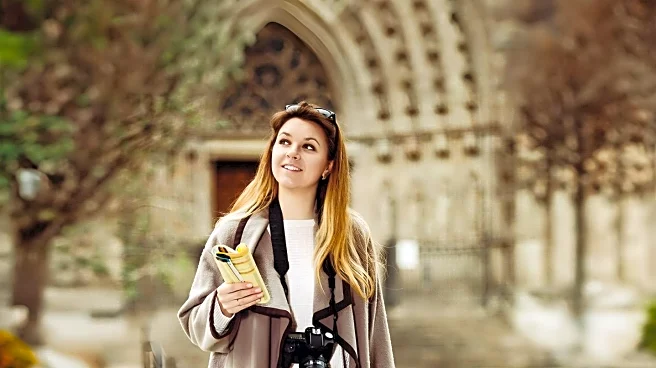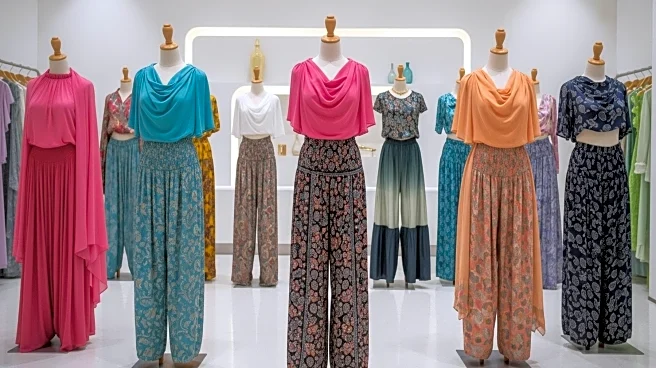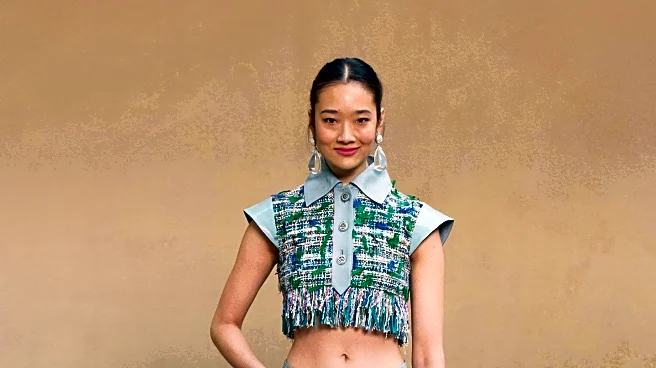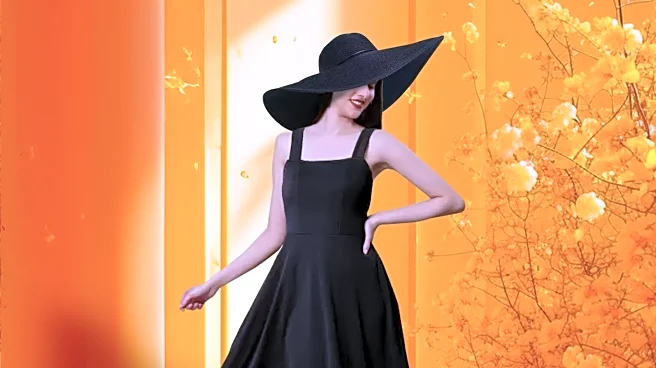What's Happening?
Fashion experts from various countries have identified distinctive clothing styles that make American tourists stand out when traveling abroad. According to stylists, Americans often favor comfort, leading to the frequent use of athletic wear such as leggings and baseball caps. This preference for casual attire contrasts with local fashion norms in places like Japan and Paris, where athletic wear is typically reserved for exercise and styled more intentionally. Additionally, American tourists are noted for being overly dressy in the evenings, with women opting for special-occasion dresses and men wearing polo shirts and chinos. The tendency to wear logo-heavy clothing and perfect makeup further distinguishes American travelers from locals, who often prefer muted colors and understated elegance.
Why It's Important?
The observations by international stylists underscore cultural differences in fashion and highlight the impact of American style on global perceptions. As American tourists continue to travel, their distinctive fashion choices can influence local economies, particularly in the fashion and retail sectors. This trend also reflects broader cultural exchanges, where American tourists may inadvertently promote certain fashion brands and styles abroad. Understanding these differences can help travelers blend in more seamlessly, fostering better cultural interactions and reducing the stereotype of the 'American tourist.' For the fashion industry, these insights offer opportunities to cater to American preferences while encouraging more diverse and culturally sensitive fashion choices.
What's Next?
As American tourists become more aware of these fashion distinctions, there may be a shift towards adopting local styles to better integrate into foreign cultures. Fashion brands could capitalize on this trend by offering travel-friendly collections that align with international fashion norms. Additionally, travel guides and fashion consultants might increasingly offer advice on how to dress appropriately in different cultural contexts, enhancing the travel experience. This could lead to a more nuanced understanding of global fashion dynamics and encourage American tourists to explore and embrace diverse styles.
Beyond the Headlines
The discussion around American tourists' fashion choices abroad touches on deeper cultural and social dynamics. It raises questions about cultural appropriation versus appreciation and the role of fashion as a form of identity and expression. As travelers navigate these complexities, there is potential for greater cultural sensitivity and awareness, fostering mutual respect and understanding. This dialogue also highlights the evolving nature of fashion as a global language, capable of bridging cultural divides while celebrating individuality.













